Bed bug bites are very itchy and can cause wounds. But then, flea bites can also cause itchiness and can leave bite marks. In short, it’s quite difficult to tell the difference between them.
Bed bug bites and flea bites are different from each other in terms of location and occurrence. The former can be on the face, arms, body, and legs, while the latter are mostly on the lower part. Bed bugs bite mostly humans, while fleas usually bite furry pets.
In general, fleas prefer biting cats and dogs rather than humans. They love to stay on one host instead of jumping from one animal to another. On the other hand, bed bugs prefer biting humans instead of pets.
What Do Flea Bites Look Like?
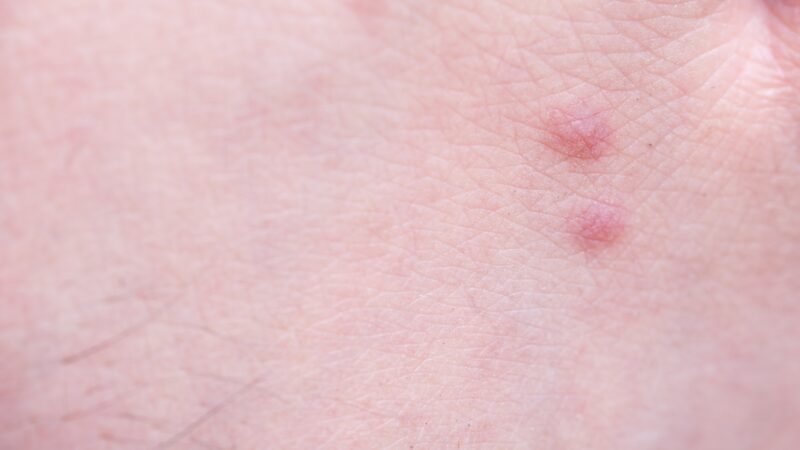
Flea bites look like small bumps with a discolored ring or halo around the bite. They may appear as a cluster of three or four bites that are formed in a straight line.
Although fleas prefer biting pets such as dogs and cats, these external parasites may also bite humans, especially if they don’t find a host animal.
Related: Flea Bites on Humans: Identification, Treatment, Allergic Reactions & More
How Can You Tell if You Have Flea Bites?
You can tell if you have flea bites by observing the bite marks very closely. If the marks have dark red in the center and they develop into blisters, they are most likely flea bites.
Fleas love to bite humans on their feet and ankles and not on the upper body. Another clue is that you have a pet dog or cat that has fleas.
But then, you can also have fleas at home even if you don’t have pets. If you have just moved into a house and the former owner or tenant had pets infested by fleas, some fleas may be left on carpets or couches.
In most cases, flea bites heal without treatment. But if there are signs of infections, you must visit a doctor.
Where Do Fleas Usually Bite?
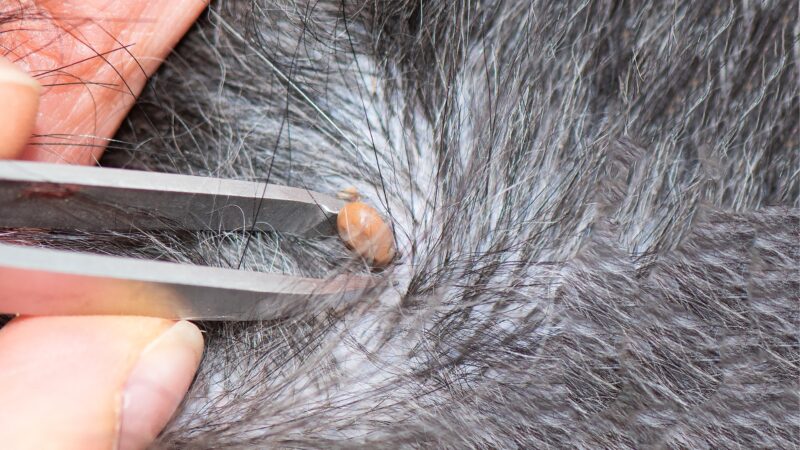
Fleas on dogs and cats usually bite the animals’ abdomen, ears, neck, lower back, groin, hind legs, and base of the tail. On the other hand, fleas usually bite people on their legs, feet, and ankles.
But sometimes, they also bite the armpits, groin, waist, and skin folds of elbows and knees. Yet, fleas rarely bite humans.
Where Are Fleas Most Commonly Found?
Fleas are most commonly found on both pet and stray cats and dogs. These parasites are also common in wild animals, especially opossums, and raccoons.
Fleas on pets usually come from wildlife. If there are no hosts around, fleas outdoors thrive in moist, shady, cool places. They are also common worldwide.
Can You See Fleas?
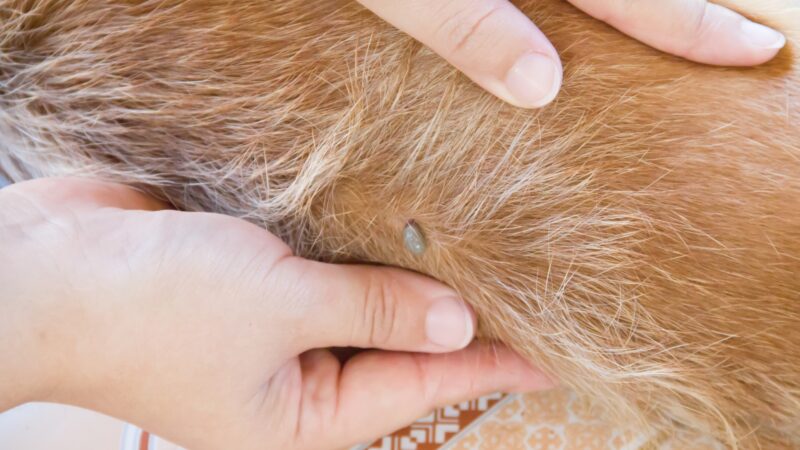
You can see fleas despite their very small sizes. Adult fleas are about 1/12 to 1/8 inches (2.1 to 3.2 mm) long, reddish-brown, and have no wings.
They have piercing-sucking mouthparts, thin, laterally compressed bodies that are covered with heavily built, backward-facing spines, and six legs with claws on the bottom.
The most common species is the cat flea (Ctenocephalides felis), which can be found both in cats and dogs. Dog fleas (Ctenocephalides canis) are far less common than cat fleas, but they somehow look alike. Nevertheless, you cannot spot the difference with the naked eye. You should use a microscope.
What Are the Risks of Flea Bites?
Flea bites can cause a rash known as papular urticaria, which appears as hot, itchy, and unpleasant to the touch. They transmit bacteria that can cause diseases in people if their bites turn into open sores, so you shouldn’t scratch them. Flea bacteria can very rarely transmit diseases like typhus, causing red, painful, swollen, and pus-filled flea bites.
How to Treat Flea Bites?
As mentioned earlier, flea bites usually go away without treatment. But if they become very itchy, don’t scratch them. Instead, you can try over-the-counter hydrocortisone creams such as Medpride Hydrocortisone Cream 1% . If you are allergic to fleas, you can also take Benadryl Ultratabs Antihistamine orally.
- SOOTHING POWER: Experience the soothing power of hydrocortisone...
- POTENT ANTI-ITCH: Unleash the power of 1% hydrocortisone cream, a...
- DISCOMFORT RELIEF: Say goodbye to discomfort with our mosquito...
- VERSATILE APPLICATIONS: Trust in the versatility of our...
- POISON IVY TREATMENT: Rely on MED PRIDE Hydrocortisone Cream for...
If flea bites don’t go away after a week and there are already signs of infections, you should visit the nearest doctor. Flea bites on babies also usually don’t need treatment. Although not dangerous, your baby may feel discomfort. If there are still marks after washing with soap and water, bring your baby to a pediatrician.
- 48-count pack of Benadryl Ultratabs Antihistamine Allergy Relief...
- The small, oval shaped coated tablets with the antihistamine...
- Effective & powerful multi-symptom allergy relief for unexpected...
- A trusted allergy brand, Benadryl Ultratabs provide powerful...
- Allergy medicine from a doctor recommended brand for safe &...
What Do Bed Bug Bites Look Like?
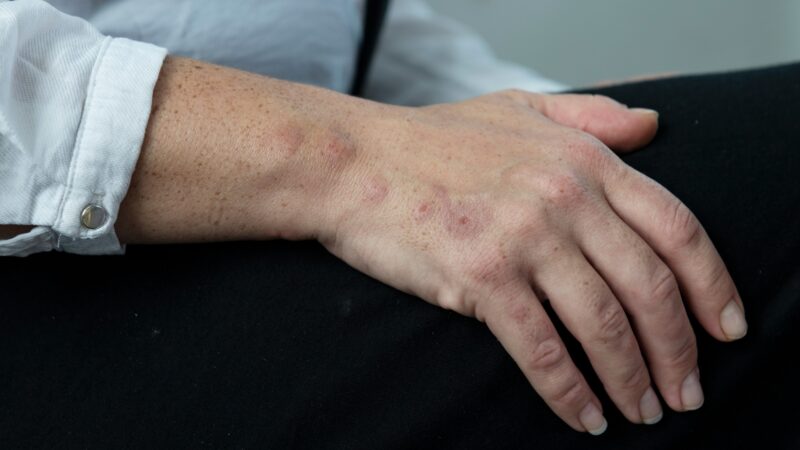
Bed bug bites may also look like red spots on the skin in a straight line and can cause skin swelling. In most cases, they appear in the morning after you wake up.
However, you can also have bed bug bites after sitting in an infested area for a long time. Most people bitten by bed bugs feel very itchy, but some don’t.
How Can You Tell if You Have Bed Bug Bites?
You can tell if you have bed bug bites also by observing the bite marks closely. They usually form in a straight line of 3 to 4 marks.
If you sleep in the same spot every night without treating the area, bed bug bites will continue to appear over and over in regular patterns. Over time, they may cause swelling and bleeding.
Bed bugs bite people who are sleeping and are painless at first. This is why bed bug bites are mostly felt in the morning once the person bitten wakes up.
These annoying bloodsuckers are nocturnal, which means they are most active at night. However, it does not necessarily mean that they don’t bite during the daytime.
Where Do Bed Bugs Usually Bite?
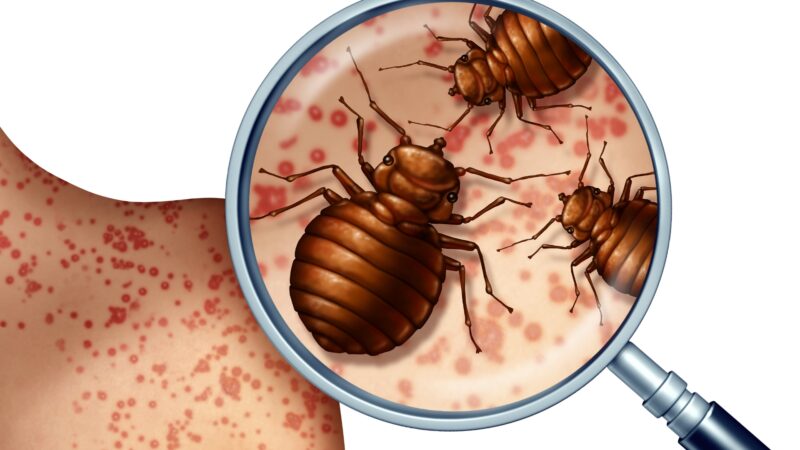
Bed bugs bite any part of the body, but they prefer biting the exposed parts over the hidden ones. This includes the face, neck, arms, hands, and legs.
These notorious house pests inject a natural anesthetic into the skin, which is why you won’t feel the pain of their bites at first, and while they are sucking your blood.
Where Are Bed Bugs Most Commonly Found?
As the name implies, bed bugs are commonly found in beds. You don’t see them right away because they hide in box springs, bed frame cracks and crevices, and seams of mattresses and pillows. Although they love staying near their food source, they can also hide in wall junctions, curtains, furniture, and in screw heads.
Can You See Bed Bugs?
You can see bed bugs, although they are very small. There are two common bed bug species – Cimex lectularius and Cimex hemipterus. Although they have a slight difference, both of them can grow up to about 1/5 inch (5 mm) long. Bed bugs have relatively flat, oval bodies, compound eyes, six legs, and are wingless.
When unfed, bed bugs are mahogany or rusty brown. But after a blood meal, their bodies become red-brown. Baby bed bugs (nymphs) look like adults but are much smaller and slower, and are almost microscopic. Newly hatched bed bugs are almost colorless and translucent. And like adults, they bite and suck blood, too.
What Are the Risks of Bed Bug Bites?
Despite the rarity of allergic reactions, bed bugs can rarely cause difficulties. Compared to fleas, they pose a lesser threat of disease transmission. An allergic reaction may cause enlarged bite marks and uncomfortable bite site swellings. In rare cases, bites can cause anaphylaxis, which can be fatal and require emergency medical intervention.
How to Treat Bed Bug Bites?
Treating bed bug bites is not usually necessary since they heal within a week. But if there are signs of allergic reactions, you can wash them gently with soap and water.
If symptoms persist, you can apply hydrocortisone cream or any anti-itch creams to help ease the itchiness. You can also take an oral antihistamine.
On the other hand, babies or toddlers with bed bug bites will experience extreme discomfort. Unlike adults, small children are more likely to scratch them. Make sure their nails are always short.
Aside from using soapy water, you can also apply a cold compress on the infected skin. Better yet, consult your pediatrician.
Related: Bed Bug Bites: How to Treat Bed Bug Bites and Prevent Them
Are There Similarities Between Flea Bites and Bed Bug Bites?
There are a few similarities between flea bites and bed bug bites. First of all, both of them can look the same.
They leave small bumps that can be extremely itchy and may appear in a straight line of three or four bite marks. However, not all humans bitten by fleas and bed bugs will experience the same skin reactions.
In most cases, flea bites and bed bug bites don’t require treatment and are usually gone in a few days. But if you have allergies, skin infections can develop once you scratch them heavily. To reduce the itchiness, you can wash them with soapy water and apply anti-itch creams. You can also consult a dermatologist.
Bed Bug Bites vs. Flea Bites: What is the Main Difference?
The main difference between bed bug bites and flea bites is the health risk. According to a study, bed bugs can transmit human pathogens that can cause diseases. But fortunately, these horrible pests have some “neutralizing factors” that reduce the possibility of transmitting infectious diseases to humans.
On the contrary, flea bites can transmit some diseases to humans. This includes plague and flea-borne typhus, which are transmitted to humans when fleas bite infected animals such as rodents. Since some fleas also poop while feeding, they can also transmit these diseases to humans once feces enter the open wound.
How Do Bed Bugs and Fleas Spread?
Bed bugs and fleas spread differently. Both of them can be present in homes, but these pests are brought inside in different ways.
Bed bugs can enter your home through infested items, especially clothing. If you travel a lot and have stayed in hotels, you are very likely to bring bed bugs home without noticing them.
Conversely, fleas can enter your home through infested animals. Contrary to what many people think, these bloodsucking insects don’t only stay in dogs and cats.
They also feed on the blood of furry wild animals such as opossums and raccoons. This is why you can also have fleas in your home, even if you don’t have pets.
List of Sources
Sutherland, A. M., Choe, D. -H., Lewis, V. R. (2013). Bed Bugs. Agriculture and Natural Resources, University of California.
Rust, M. K. (2010). Fleas. Agriculture and Natural Resources, University of California.
Potter, M. F. (2018). Flea Control and Prevention. University of Kentucky.
Bed Bugs FAQs. (2020). Centers for Disease Control and Prevention.
- How to Get Rid of Copperheads | Practical Guide - August 27, 2023
- How to Get Rid of Corn Snakes | What Makes Them Aggressive? - August 27, 2023
- How to Get Rid of Alligators | Safety Measures and Removal Methods - July 16, 2023


